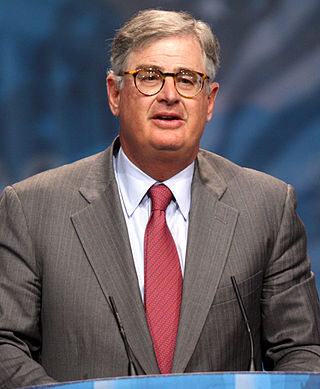Related Research Articles

Compaq Computer Corporation was an American information technology company founded in 1982 that developed, sold, and supported computers and related products and services. Compaq produced some of the first IBM PC compatible computers, being the second company after Columbia Data Products to legally reverse engineer the BIOS of the IBM Personal Computer. It rose to become the largest supplier of PC systems during the 1990s before being overtaken by Dell in 2001. Struggling to keep up in the price wars against Dell, as well as with a risky acquisition of DEC, Compaq was acquired for US$25 billion by HP in 2002. The Compaq brand remained in use by HP for lower-end systems until 2013 when it was discontinued. Since 2013, the brand is currently licensed to third parties for use on electronics in Brazil and India.

Xerox Holdings Corporation is an American corporation that sells print and digital document products and services in more than 160 countries. Xerox is headquartered in Norwalk, Connecticut, though it is incorporated in New York with its largest population of employees based around Rochester, New York, the area in which the company was founded. The company purchased Affiliated Computer Services for $6.4 billion in early 2010. As a large developed company, it is consistently placed in the list of Fortune 500 companies.

Louis Vincent Gerstner Jr. is an American businessman, best known for his tenure as chairman of the board and chief executive officer of IBM from April 1993 until 2002, when he retired as CEO in March and chairman in December. He is largely credited with turning IBM's fortunes around.

Samuel J. "Sam" Palmisano is a former president and the eighth chief executive officer of IBM until January 2012. He also served as chairman of the company until October 1, 2012.

Henry McKelvey Blodget is an American businessman, investor and journalist. He is notable for his former career as an equity research analyst who was senior Internet analyst for CIBC Oppenheimer and the head of the global Internet research team at Merrill Lynch during the dot-com era. Blodget was charged with civil securities fraud by the U.S. Securities and Exchange Commission and settled the charges. Blodget is the co-founder and former CEO of Business Insider.
John Fellows Akers was an American businessman. He was president (1983–1989), chief executive officer (1985–1993) and chairman (1986–1993) of IBM.
Ellen Mooney Hancock was a technology manager from the United States who worked for IBM and Apple, among others.

Affiliated Computer Services Inc. (ACS) was a company that provided information technology services as well as business process outsourcing solutions to businesses, government agencies, and non-profit organizations. ACS was based in Dallas, Texas. ACS was ranked at number 341 on the 2010 Fortune 500 list. Founded in 1988, by Darwin Deason, ACS operated in nearly 100 countries, generating over $6 billion annually. As of September 2009, ACS employed approximately 74,000 people.
Anne M. Mulcahy is the former chairperson and CEO of Xerox Corporation. She was named CEO of Xerox on August 1, 2001, and chairwoman on January 1, 2002. In addition to serving on the Xerox board, she has been a member of the boards of directors of Catalyst, Citigroup Inc., Fuji Xerox Co. Ltd. and Target Corporation.

Ursula M. Burns is an American businesswoman. Burns is known for her tenure as the CEO of Xerox from 2009 to 2016. In this role, Burns was the first black woman to lead a Fortune 500 company. She is also the first woman to follow another as the head of a Fortune 500 company. Burns remained the chairman at Xerox from 2010 to 2017.

Safra Ada Catz is an Israeli-American billionaire banker and technology executive. She is the CEO of Oracle Corporation. She has been an executive at Oracle since April 1999, and a board member since 2001. In April 2011, she was named co-president and chief financial officer (CFO), reporting to founder Larry Ellison. In September 2014, Oracle announced that Ellison would step down as CEO and that Mark Hurd and Catz had been named as joint CEOs. In September 2019, Catz became the sole CEO after Hurd resigned due to health issues.
Paul Arthur Allaire was an American entrepreneur who served as CEO and chairman of Xerox Corporation, and as a director on several other public companies.

Rajakumaran Rajaratnam is a Sri Lankan-American former hedge fund manager and founder of the Galleon Group, a New York-based hedge fund management firm. He is also the author of his memoir, Uneven Justice: The Plot to Sink Galleon.
Gerald (Gerry) M. Czarnecki is an American corporate executive, an author of leadership books, and the founder of the National Leadership Institute, a non-profit organization.

Virginia "Ginni" Rometty is an American business executive who was executive chairman of IBM after stepping down as CEO on April 1, 2020. She was previously chairman, president and CEO of IBM, becoming the first woman to head the company. She retired from IBM on December 31, 2020, after a near-40 year career there. Before becoming president and CEO in January 2012, she first joined IBM as a systems engineer in 1981 and subsequently headed global sales, marketing, and strategy.
Ralph S. Larsen was an American businessman. He was the chief executive officer (CEO) of Johnson & Johnson from 1989 to 2002.

International Business Machines Corporation, nicknamed Big Blue, is an American multinational technology company headquartered in Armonk, New York and present in over 175 countries. IBM is the largest industrial research organization in the world, with 19 research facilities across a dozen countries, having held the record for most annual U.S. patents generated by a business for 29 consecutive years from 1993 to 2021.

Lawrence A. Zimmerman, also known as Larry Zimmerman, is an American businessman who served as the chief financial officer and executive vice president of Xerox Corporation from June 1, 2002, to April 2011.
References
- ↑ "Hr Woes at Xerox". HR Magazine. 2001.
- 1 2 Deutsch, Claudia H. (April 7, 1999). "New Chief Is Named at Xerox, Amid Altered Copier Landscape". The New York Times . Retrieved October 8, 2020.
- ↑ Gilpin, Kenneth N. (June 13, 1997). "Xerox Hires I.B.M. Officer As President". The New York Times.
- ↑ "Hr Woes at Xerox". HR Magazine. 2001.
- ↑ Bianco, Anthony; Moore, Pamela L. (March 5, 2001). "Xerox: The Downfall". Business Week . Archived from the original on April 11, 2001. Retrieved March 1, 2009.
- ↑ "Conversations with the CEO: A profile of Richard Thoman, F67, F69, F71". February 27, 2010.
- ↑ Deutsch, Claudia H. (March 18, 2001). "PrivateSector; Healing From Executive Trauma". The New York Times.
- ↑ Bianco, Anthony; Moore, Pamela L. (March 5, 2001). "Xerox: The Downfall". Business Week . Archived from the original on April 11, 2001. Retrieved March 1, 2009.
- ↑ Bianco, Anthony; Moore, Pamela L. (March 5, 2001). "Xerox: The Downfall". Business Week . Archived from the original on April 11, 2001. Retrieved March 1, 2009.
- ↑ Deutsch, Claudia H. (March 18, 2001). "PrivateSector; Healing From Executive Trauma". The New York Times . Retrieved March 1, 2009.
- ↑ Deutsch, Claudia H. (March 18, 2001). "PrivateSector; Healing From Executive Trauma". The New York Times.
- ↑ "Conversations with the CEO: A profile of Richard Thoman, F67, F69, F71". February 27, 2010.
- ↑ Norris, Floyd (June 6, 2003). "6 From Xerox To Pay S.E.C. $22 Million". The New York Times.